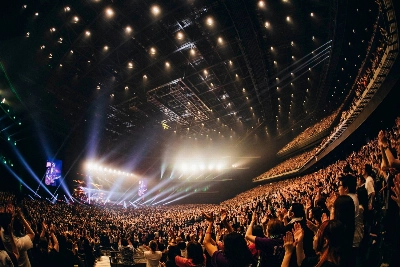In the early 20th century, Europe played host to a procession of distinct art movements which continued until a procession of black boots stomped the creative life out of the continent.
Meanwhile, across the Atlantic, a bunch of painters were happy to be doing pretty much the same thing for most of the 1920s and 1930s, that is, painting the countryside, small rural towns and, occasionally, the tentative urban environments of their young country. One of the best known of the American Scene painters was Edward Hopper (1882-1967), and some 85 of his oils, watercolors and drawings are now showing at the Bunkamura Museum of Art in Tokyo's Shibuya Ward.
A quiet and restrained painter, Hopper traveled throughout America painting simple people in simple settings, never championing the fancy cars or the skyscrapers that were to change the face of his country. He seems to have been proud of this unique American aesthetic. Hopper did not want his American Scene pals to fret about how plain some of their pastorals might have appeared to the avant-gardists overseas and to certain Europhile critics in America.
"We are not French and never can be," wrote Hopper in a 1933 essay, "and any attempt to do so is to deny our inheritance and try to impose upon ourselves a character that can be nothing but a veneer upon the surface."
The appeal in Hopper's best-known paintings derives from their insight into the people that inhabit the canvases, particularly through the artist's focus on solitude, which was, emotionally speaking, the common denominator of an American generation fanning out over a vast land in search of a new and better life.
The people in his paintings are pictured in natural light, standing in the doorways of their white clapboard houses, with the only darkness being the shadows they and their homes throw. Light is paramount in Hopper's approach, and it is when he later moved his characters inside, especially in urban environments, that the light, both natural and artificial, works best. His painting "Nighthawks," a 1942 canvas that peers in on the denizens of a low-rise coffee shop, is among the most American-flavored pictures of the 20th century.
Unfortunately, "Nighthawks" is hanging in the Art Institute of Chicago, which points to one of the main problems with this exhibition: There just aren't enough representative pieces here.
The show may appeal to those with an interest in the development of Hopper's art, but then again, it may not. There is not much that is special about the pictures Hopper painted during his time in Paris (1906-1910), certainly nothing to compare with the work being done by other realism painters in the City of Light, such as Maurice Utrillo, who was entering his white period at the time.
Anyway, there are some very accomplished etchings here, in which Hopper shows himself keen on experimenting with perspective and points of focus. These are better than his early paintings, which use color and light well enough but fail to convey their subjects, tending instead to merely suggest them. What is missing in these works is the heart, something a great painter does not leave out. With a few exceptions, most notably the portentous "Woman Standing on a Platform" (1901-02), which hints at Hopper's later use of muted colors, many of the early works can be disappointing. Which is not to suggest that Hopper did not paint well in the early part of his career (he exhibited and sold at the epoch-making Armory Show when he was but 30), but rather that the best came later.
Although this is meant as a whole career retrospective and not a greatest hits show, walking through the early works one does begin to anticipate the fruits of this man's artistic gifts, and, upon entering the last room of the show, where there are at most a half-dozen paintings that really say "Hopper," the feeling is that this is insufficient.
The show is well lighted, and most of the works are mounted without glass. Organized by long-time Japanese touring-show packager APT International and supported by tobacco giant Phillip Morris, this is the first major Japanese retrospective of the artist's work in over a decade. It is good, but deserves to be better.
















With your current subscription plan you can comment on stories. However, before writing your first comment, please create a display name in the Profile section of your subscriber account page.